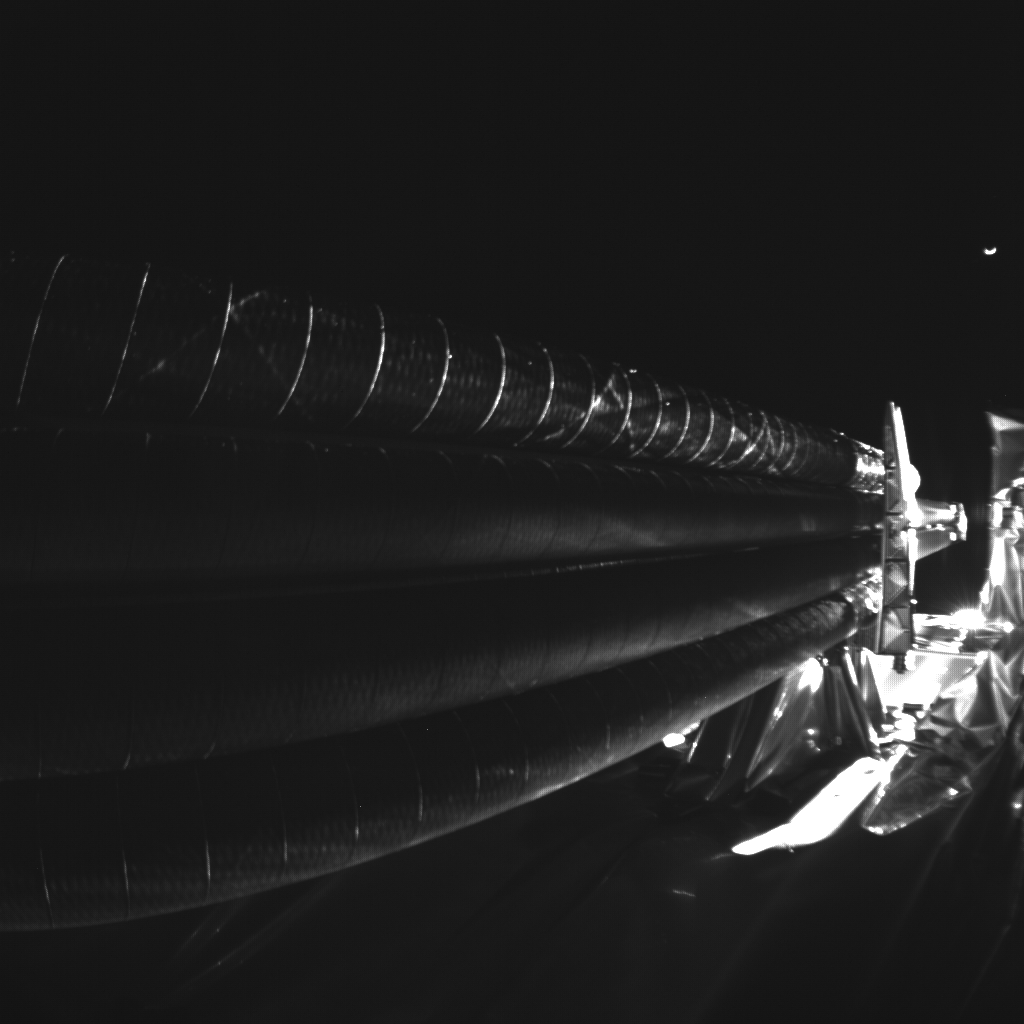Europe's flagship Jupiter probe finally managed to fix its antenna problem.
The Jupiter Icy Moons Explorer, or JUICE, just deployed its Radar for Icy Moons Exploration (RIME) antenna after more than three weeks of intense troubleshooting efforts, European Space Agency (ESA) officials announced today (May 12).
That success is a big deal, because RIME is a key piece of JUICE's scientific package.
Once the probe arrives in the Jupiter system in July 2031, "it will use RIME to study the surface and subsurface structure of Jupiter's icy moons down to a depth of 9 km [5.6 miles]," ESA officials wrote in an update today. "RIME is one of 10 instruments on board JUICE set to investigate the emergence of habitable worlds around gas giants and the formation of our solar system."
Related: Europe successfully launches JUICE to study Jupiter's icy moons

The $1.1 billion (870 million euros) JUICE mission launched on April 14. Everything went well initially, except for the planned deployment of the RIME antenna: The instrument's 52-foot-long (16 m) boom got stuck.
The mission team suspected that a stuck pin was jamming the segments of the folded-up RIME antenna. They tried a number to tricks to jostle the pin loose — shaking JUICE using its thrusters, for example, and orienting the probe to be warmed by sunlight.
Get the Space.com Newsletter
Breaking space news, the latest updates on rocket launches, skywatching events and more!
These techniques showed some promise, moving the pin a bit. But success didn't come until today, "when the flight control team fired a mechanical device called a 'non-explosive actuator' (NEA), located in the jammed bracket," ESA officials wrote in the update.
"This delivered a shock that moved the pin by a matter of millimeters and allowed the antenna to unfold," they added.
After arriving in orbit around Jupiter, JUICE will study the moons Ganymede, Callisto and Europa up close during a series of flybys. All three of these moons are thought to harbor oceans of liquid water beneath their icy shells.
If all goes according to plan, JUICE will enter orbit around the 3,270-mile-wide (5,260 km) Ganymede, the largest moon in the solar system, in December 2034. This will be a historic moment: No spacecraft has ever orbited a moon of a planet beyond Earth.
Mike Wall is the author of "Out There" (Grand Central Publishing, 2018; illustrated by Karl Tate), a book about the search for alien life. Follow him on Twitter @michaeldwall. Follow us on Twitter @Spacedotcom or Facebook.
Join our Space Forums to keep talking space on the latest missions, night sky and more! And if you have a news tip, correction or comment, let us know at: community@space.com.

Michael Wall is a Senior Space Writer with Space.com and joined the team in 2010. He primarily covers exoplanets, spaceflight and military space, but has been known to dabble in the space art beat. His book about the search for alien life, "Out There," was published on Nov. 13, 2018. Before becoming a science writer, Michael worked as a herpetologist and wildlife biologist. He has a Ph.D. in evolutionary biology from the University of Sydney, Australia, a bachelor's degree from the University of Arizona, and a graduate certificate in science writing from the University of California, Santa Cruz. To find out what his latest project is, you can follow Michael on Twitter.
-
newtons_laws Yes, very good news. Hopefully the problem and ways to avoid it in any similar future missions will be incorporated into any new designs.Reply









